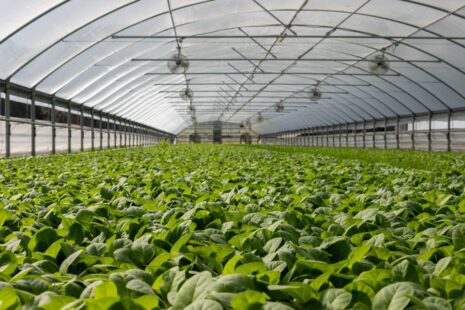
June 21, 2024 • ALL SEASONS WORKFORCE AUSTRALIA

HIGH TECHNOLOGY OPPORTUNITIES IN URBAN AUSTRALIA
High-tech horticulture is being used in metropolitan locations around the world for a variety of reasons, including economic development. Community involvement and environmental advantages are two things that come to mind when thinking about this project. Vertical farm systems, container farms, and other similar systems are now being witnessed on a global scale. According to latest statistics, Australia has lagged behind the rest of the world. Thus, the nation needs to pursue high-tech horticulture for a variety of reasons. High initial capital investment, for example, is a hurdle. Nevertheless, there is a rising curiosity in how high-tech horticulture works.
OVERVIEW
Urban agriculture is sometimes overlooked in urban planning and laws. Despite requests to incorporate farming into urban design, food production has been pushed to the perimeter of cities and rural regions. This is notably obvious in Australia, where peri-urban residential expansion has resulted in market gardens being relocated to more rural areas. High Technology Urban Horticulture, also recognised as, HTUH is not integrated into development projects or planning procedures in Australia (particularly conventional Local Environmental Plans).
LACK OF INSTITUTIONAL SUPPORT
In Australia, there is far too little institutional support for HTUH. Examples from Paris, Shanghai, Singapore, and Amsterdam show how an HTUH sector may be fostered and managed on a global scale.
Some of the lessons learnt from the international models are:
Developing HTUH-related policy objectives
Public-private partnerships between universities, government agencies, and private businesses to support the establishment of an HTUH ‘ecosystem’ of start-ups and businesses capable of developing innovative technologies and services.
Grants and financial assistance to new and established enterprises to help them overcome the barriers of initial investments, and opportunities improve their equipment and systems.
Using competitive calls for ideas to make it easier to get physical space to farm.
While Australia lacks the institutional backing for HTUH which other international cities have, progress has been made in integrating green spaces into urban policies and strategies. Here, green areas are emphasised in the design framework for New South Wales. The framework lays out a roadmap and potential approach for incorporating HTUH into urban planning.
WHAT IS THE SOLUTION?
To pay the massive startup and operating costs of HTUH business models, a premium price for the product must be set
In Australia and abroad, operators have concentrated on:
Developing relationship-based markets where supply is direct to customers, food service sector and independent grocers in their immediate area
Consumer marketing which promotes HTUH produce as local, sustainable, high quality and nutritious
Supply chain integration to reduce post-harvest costs (establishment of HTUH within agri-food precincts such as the Aerotropolis proposed in Western Sydney will facilitate supply
chain integration further)
Development of pre-packaged ‘convenience’ food such as ready-made salads.
Although there are challenges that limit the expansion of HTUH in Australia currently, there are emerging trends that provide opportunities for the rapid spread of HTUH.

Irrigation covers only 5% of Australia’s tilled agricultural land but delivers 30% of total agricultural output. Agriculture utilises 50-70 percent of Australia’s annual water use, with irrigation accounting for 90 percent of that. Regulations and licences govern the vast bulk of irrigated water use. Irrigators require a permit to draw specific amounts of water from […]
Read More →
Due to the fact that some farmers in the flood zone plant their crops under cover, they were mostly unaffected when lettuce prices spiked to $10 as a result of the catastrophic weather in New South Wales and Queensland. According to experts, protected cropping may hold the answer to maintaining cabbage in its proper place—in […]
Read More →
Inside Tatura’s brand-new, multimillion-dollar glasshouse, the winter jackets are off. 28 degrees Celsius and the aroma of 150,000 tomato truss plants permeate the air. 60 new jobs will be created at the site and 4,000 tonnes of tomatoes will be produced annually by the new six-hectare glasshouse. According to Mike Nichol, chief executive of Flavorrite, […]
Read More →